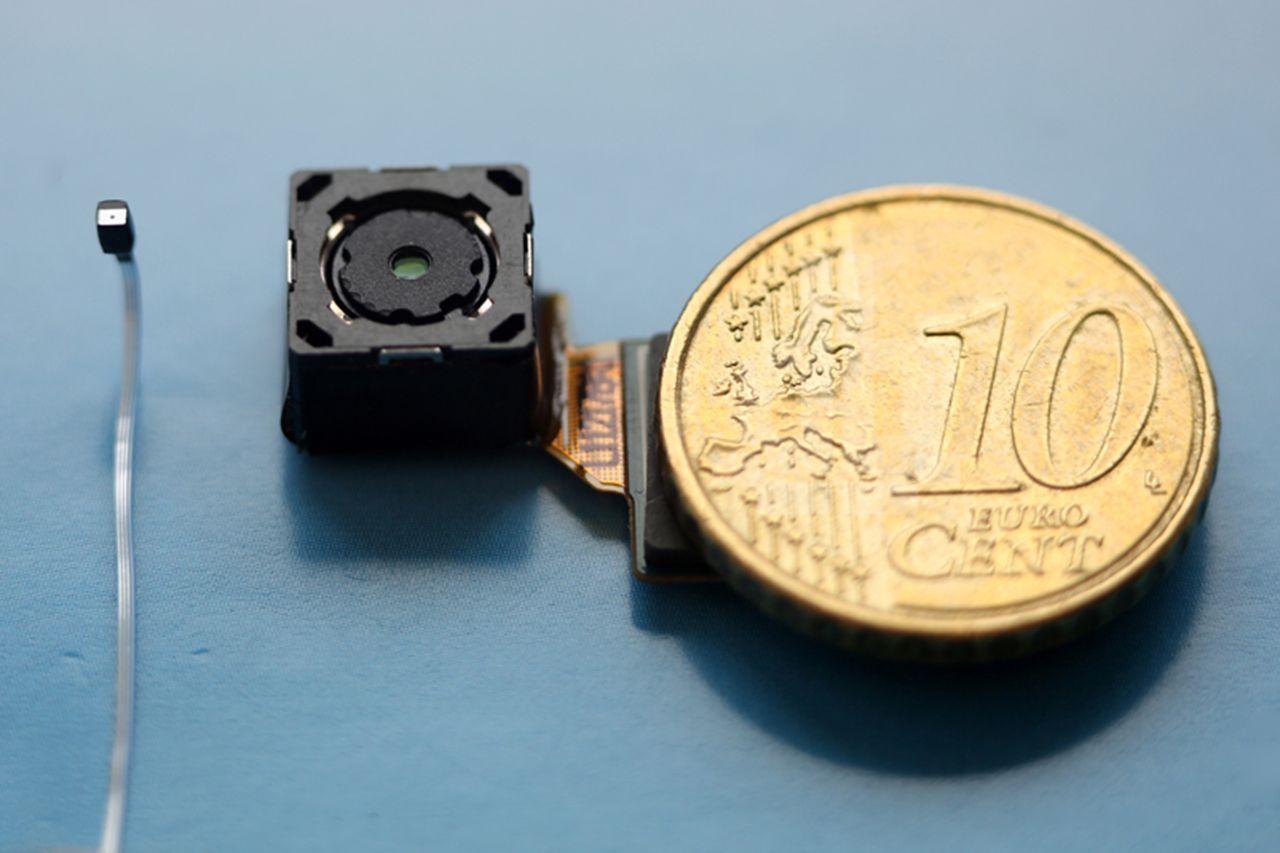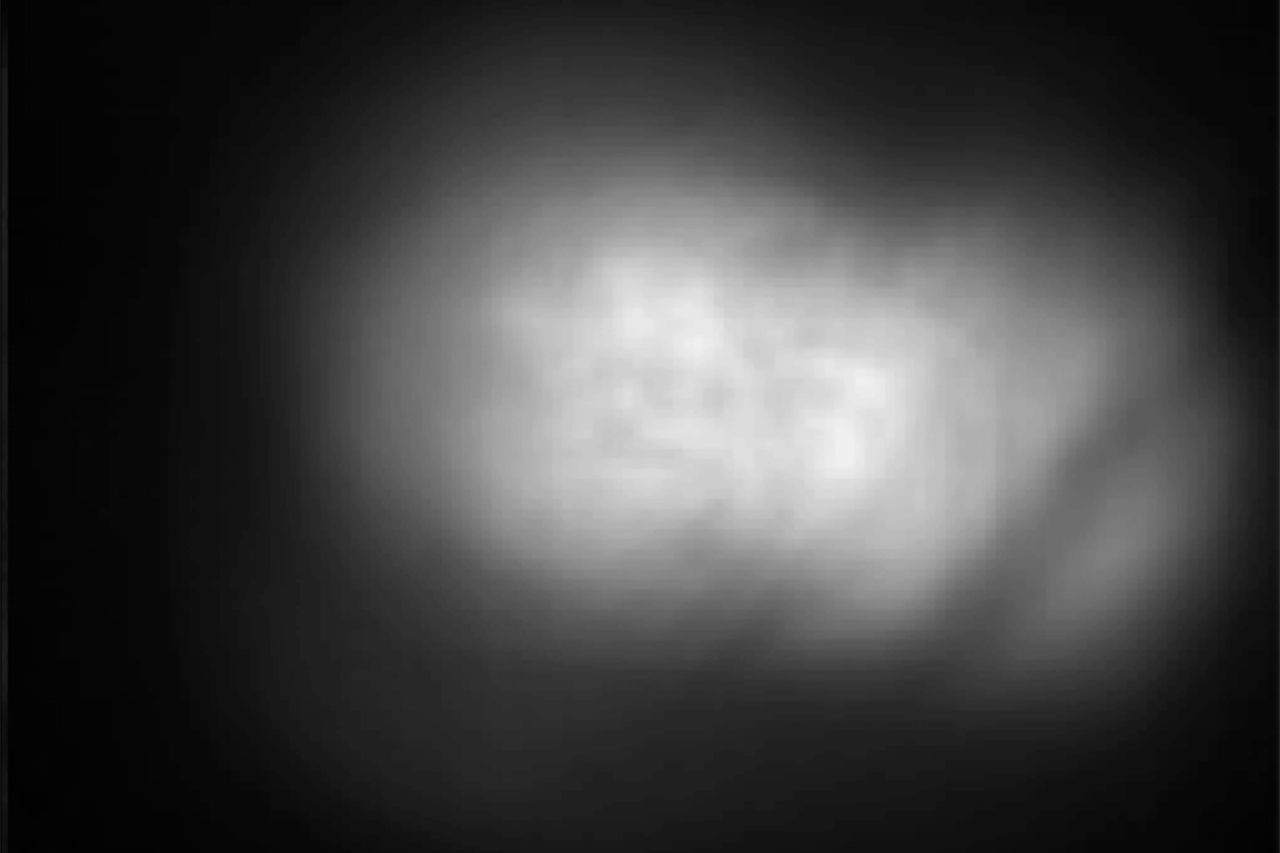Science boffins at technology licensing company Rambus have managed to create a camera that doesn't use a lens. As a result it is tiny at 200-micrometres thick, which is smaller than a pencil point.
That camera in the photo above is from a smartphone. The Rambus snapper is that tiny one on the far left.
The potential for such a device is huge - it could mean a virtually undetectable camera in every powered device, ideal for the Internet of Things. A user could walk around the house gesture controlling everything once these cameras become smart enough to recognise movements.
Back in the now this Rambus camera works like no other snapper. Current cameras focus light onto a sensor to re-create the image digitally on a screen. Rambus uses a grating etched with a spiral pattern which lets light enter from every orientation. The sensor is able to collect a jumble of spirals that can be translated into an image by software. Before the translation process the image would be a blur to the human eye. Scroll through the software rendering stages below to see how the image becomes clear.
As you can see the final image isn't exactly a threat to current cameras, with just a 128 x 128 resolution. But the idea of every object having a basic level of visual awareness is hugely exciting. And a little scary.
The technology to create this camera is the same as that used to make a CMOS sensor meaning these could be added to an array of chips for just a few pence more than current production costs.
READ: 3D Air-Touch could bring accurate gesture controls to mobiles soon




